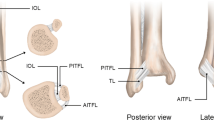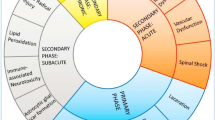Abstract
This article discusses the treatment of spasticity with botulinum toxin A as a new approach in the neurological rehabilitation of patients after stroke. Clinical studies have been reviewed to provide information about target groups, technical aspects and the advantages and disadvantages of treating spasticity with botulinum toxin A. Open and controlled studies showed that the intramuscular injection of Dysport® 500 to 1500U or Botox® 100 to 300U could reversibly relieve upper limb flexor and lower limb extensor spasticity. A reduced muscle tone, pain relief, better hand hygiene and improved walking function were the main benefits. Patients tolerated the treatment well. Activity or, if not possible, electrical stimulation of the injected muscles may enhance the effectiveness of the costly toxin. Serial casting is another option. With respect to the action of botulinum toxin A, it is suggested that the effect of the toxin could be mediated by paresis of both the extrafusal and intrafusal muscle fibres, thereby altering the afferent discharge in the muscle.




Similar content being viewed by others
References
Awad EA, Dykstra D. Treatment of spasticity by neurolysis. In: Kottke FJ, Lehmann JF, editors. Krusen’s handbook of physical medicine and rehabilitation. 4th ed. Philadelphia (PA): WB Saunders, 1990: 1154–62
Das TK, Park DM. Botulinum toxin in treating spasticity. Br J Clin Pharmacol 1989; 43: 401–2
Hesse S, Mauritz KH. Management of spasticity. Curr Opin Neurol 1997; 10: 498–501
Jankovic J, Brin MF. Therapeutic uses of botulinum toxin. N Engl J Med 1991; 324: 1186–94
Bakheit AMO, Ward CD, McLellan DL. Generalised botulismlike syndrome after intramuscular injections of botulinum toxin type A: a report of two cases. J Neurol Neurosurg Psychiatry 1997; 62: 198
Schnider P, Berger T, Schmied M, et al. Increased residual urine after local injection of botulinum toxin A [in German]. Nervenarzt 1995; 66: 465–7
Simpson DM, Alexander DN, O’Brian CF, et al. Botulinum toxin type A in the treatment of upper extremity spasticity: a randomized, double-blind, placebo-controlled trial. Neurology 1996; 46: 1306–10
Yablon SA, Benjamin TA, Ivanhoe CB, et al. Botulinum toxin in severe upper extremity spasticity among patients with traumatic brain injury: an open-labeled trial. Neurology 1996; 47: 939–44
Pierson SH, Katz DI, Tarsy D. Botulinum toxin A in the treatment of spasticity: functional implications in patient selection. Arch Phys Med Rehabil 1996; 77: 717–21
Reiter F, Danni M, Ceravolo MG, et al. Disability changes after treatment of upper limb spasticity with botulinum toxin. J Neurol Rehab 1996; 10: 47–52
Reiter F, Danni M, Lagalla G, et al. Low-dose botulinum toxin with ankle taping for the treatment of spastic equinovarus foot after stroke. Arch Phys Med Rehabil 1998; 79: 532–5
Palmer DT, Horn LJ, Harmon RL. Botulinum toxin treatment of lumbrical spasticity. Am J Phys Med Rehabil 1998; 77: 349–50
Hesse S, Lücke D, Malezic M, et al. Botulinum toxin therapy for lower limb extensor spasticity. J Neurol Neurosurg Psychiatry 1994; 57: 1321–5
Burbaud P, Wiart L, Dubos JL, et al. A randomised, double-blind, placebo-controlled trial of botulinum toxin in the treatment of spastic foot in hemiparetic patients. J Neurol Neurosurg Psychiatry 1996; 61: 265–9
Artieda J, Quesada P, Obeso JA. Reciprocal Ia inhibition in spastic hemiplegia. Neurology 1991; 41: 286–9
Rosales RL, Arimura K, Takenaga S, et al. Extrafusal and intrafusal muscle effects in experimental botulinum toxin-A injection. Muscle Nerve 1996; 19: 488–96
Hesse S, Krajnik J, Lücke D, et al. Ankle muscle activity before and after botulinum toxin therapy for lower limb extensor spasticity in chronic hemiparetic patients: Stroke 1996; 27: 455–60
Hesse S, Brandl-Hesse B, Seidel U, et al. Lower limb muscle activity in ambulatory children with cerebral palsy before and after the treatment with botulinum toxin A. Restorative Neurol Neurosci 2000; 15: 1–8
Hughes R, Walker BC. Influence of nerve-ending activity and of drugs on the rate of paralysis of rat diaphragm preparations by Clostridium botulinum type toxin A. J Physiol 1962; 160: 221–33
Chen R, Karp BI, Goldstein SR, et al. Effect of muscle activity immediately after botulinum toxin injection for writer’s cramp. Mov Disord 1999; 14: 307–12
Snow BJ, Tsui JKC, Bhatt MH, et al. Treatment of spasticity with botulinum toxin: a double-blind study. Ann Neurol 1990; 28: 512–5
Wohlfarth K, Göschel H, Frevert J, et al. Botulinum A toxins: units versus units. Naunyn-Schmiedebergs Arch Pharmcaol 1997; 355: 335–340
Childers MK, Stacy DOM, Cooke DL, et al. Comparison of two injection techniques using botulinum toxin in spatic hemiplegia. Am J Phys Med Rehabil 1996; 75: 462–9
Author information
Authors and Affiliations
Corresponding author
Rights and permissions
About this article
Cite this article
Hesse, S., Brandl-Hesse, B., Bardeleben, A. et al. Botulinum Toxin A Treatment of Adult Upper and Lower Limb Spasticity. Drugs & Aging 18, 255–262 (2001). https://doi.org/10.2165/00002512-200118040-00003
Published:
Issue Date:
DOI: https://doi.org/10.2165/00002512-200118040-00003




